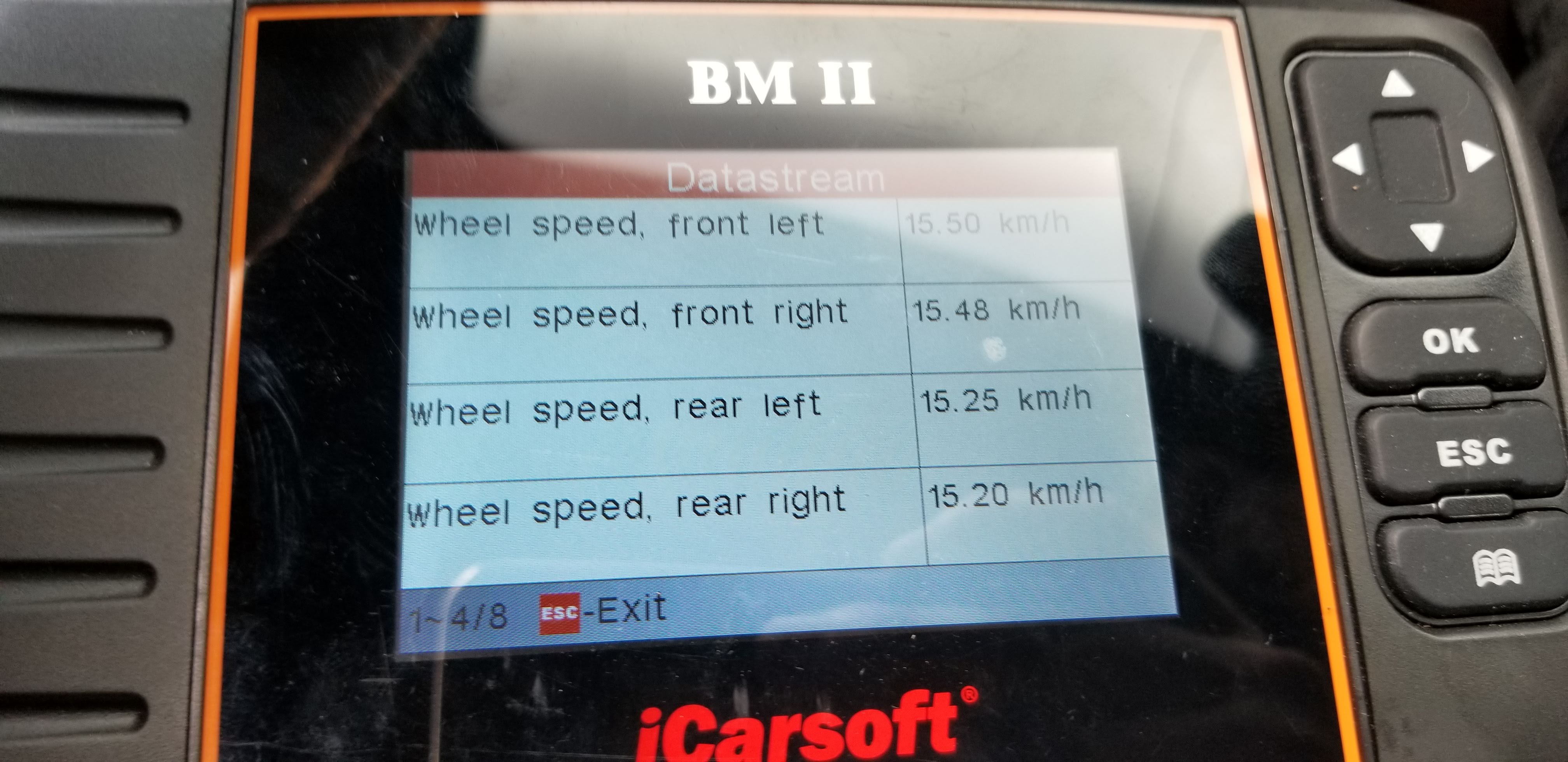- 08/14/2019
- 6 Min Read
- By: Gareth Foley
How To Troubleshoot And Replace A BMW E82, E88, E90, E91, & E92 ABS Wheel Speed Sensor
If the ABS/DSC lights just illuminated on the instrument cluster of your BMW, it can be panic-inducing. After all, there's what, roughly seven warning lights that all illuminate simultaneously on the instrument cluster, more warnings on the iDrive, and an alert sound (as if the lights didn't get your immediate attention)? In this article we're going to discuss a common failure point on many vehicles ABS/stability systems; the wheel speed sensors.
Let's see if this sounds familiar to you. You're driving down the road, everything is great, and then out of nowhere your ABS freaks out and all possible warning lights/notifications appear on your instrument cluster? If this sounds familiar, you're in good company. Recently while driving to work in my E92 M3, I noticed every time I hit the brake pedal I could feel the ABS pulsating but the ABS notification wasn't actually activating. Shortly after that, all of the ABS/DSC warning lights illuminated. Your natural instinct is to suspect an ABS controller or hydraulic unit failure (because after all that is the worst case scenario for your bank account) but chances are that it's something simple.
Fortunately, I had a scan tool with me that can read ABS/DSC faults as well as live data. I pulled over, plugged the tool into the diagnostic port, and pulled up fault codes for the DSC module first. All I had was a plausibility fault for the rear right wheel speed sensor. Next, I pulled up live data to see what was going on. As I drove along I noticed that the rear right wheel speed sensor direction of rotation would glitch out and provide "unknown" information while all of the other sensors measured forward direction of travel. All wheel speed sensors (including the rear right) continued to measure vehicle speed. The problem was intermittent, so when the direction of travel/rotation was picked up again, all warning lights would turn off. However, the fault did change from intermittent to permanent in this wheel speed sensor.
To add insult to injury, later on in the day, the front left wheel speed sensor failed completely with no vehicle speed information or direction of rotation from the front left corner. This fault in conjunction with the rear right wheel speed sensor fault also caused an SRS (safety restraint system) warning. It's kind of crazy to have two wheel speed sensors fail on the exact same day. Most importantly, it's critical to properly diagnose the issue to the fullest so you understand the problem and also understand how to fix it the first time.
What is an ABS wheel speed sensor?
Simply put, the ABS wheel speed sensor measures vehicle speed. This data is used by the ABS control module for various functions. Primarily, it's needed to prevent wheel lock up (the whole point of ABS to begin with). However, it's important to understand how these sensors work.
There are two common types of wheel speed sensors used. Older vehicles or newer vehicles with less sophisticated ABS/stability systems use passive sensors. Passive wheel speed sensors generate an alternating magnetic field. The polarity of the sensor changes as the tone ring passes by the emitted magnetic field from the sensor. The frequency of this change increases or decreases with speed which is interpreted by the ABS control module as a wheel speed value (in MPH or KPH). These sensors can be diagnosed with traditional tools like a volt meter.
Modern ABS systems use an active wheel speed sensor which uses a digital signal created by the ABS control module. This type of sensor is also known as a hall effect sensor. It's also extremely simple requiring only two wires consisting of a ground and DC voltage input from the controller. The primary advantage of active wheel speed sensors is they can more accurately read lower vehicle speeds and also read direction of travel or wheel rotation. This information is commonly used on vehicles for hill descent controls and hill start assist (among other functions). Active wheel speed sensors are a little more complicated and require a scan tool to read live data or an oscilloscope to look at the wave form created by the sensor in order to diagnose.
In the case of the BMW E8X 1-series and the BMW E9X 3-series, the ABS/DSC system uses active sensors. A failure of any type in these sensors will cause a plausibility fault which will deactivate stability control and ABS. In addition to the warnings being annoying, this is also a safety issue as well. My recommendation is to fix the faults/system as soon as possible.
Tools needed to complete this repair:
- Scan tool (Capable of reading ABS/DSC Fault Codes)
- 5mm Hex socket
- 10mm socket
- 8mm socket
- Ratchet
Parts needed to complete this repair:
- 34527853586 - Front Wheel Speed Sensor (For E82 1 M/ E9X M3 models
- 34526870075 - Front Wheel Speed Sensor (For RWD E8X/E9X non M models)
- 34526764858 - Front Wheel Speed Sensor (For xDrive E9X models)
- 34526870077 - Rear Wheel Speed Sensor (Fits all E82/E88 and RWD E9X models)
- 34526764859 - Rear Wheel Speed Sensor (For xDrive E9X models)
Step 1: Plug in your scan tool
To properly diagnose an ABS problem, you need a scan tool that can read manufacturer specific faults as well as live data. A decent scanner will be able to do this (and much more) easily. Additionally, if the scan tool can record live data, it's even more helpful as you can read the live data frame by frame to determine a pattern of the fault (if one exists). Make sure when plugged in you're reading control module information and not OBD2 data.
Step 2: Determine the specific fault
In my case, I had a rear right wheel speed sensor not reporting direction of travel and a front left wheel speed sensor reporting no data whatsoever. It's important to understand that on newer vehicles many functions are tied into one another. In this case, two bad wheel speed sensors caused a SRS fault. I had the following stored faults in the two modules I checked:
- DSC module
- 5DC1 - Wheel speed sensor plausibility, rear right
- 5D96 - Wheel speed sensor, direction of rotation, front left
- 5DC6 - Wheel speed sensor, direction of rotation, rear right
- SRS module
- 93FB - No message from DSC (road speed)
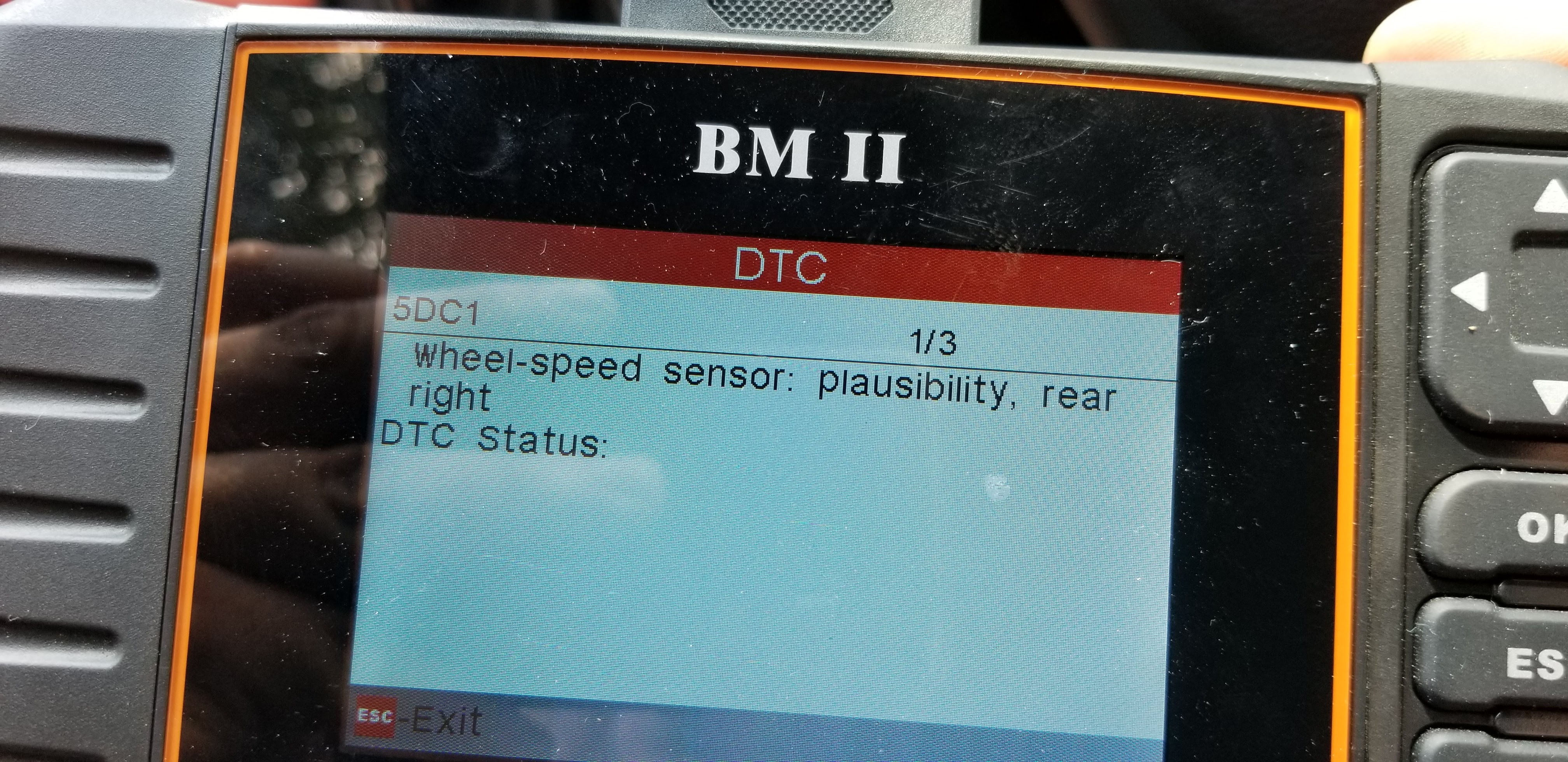
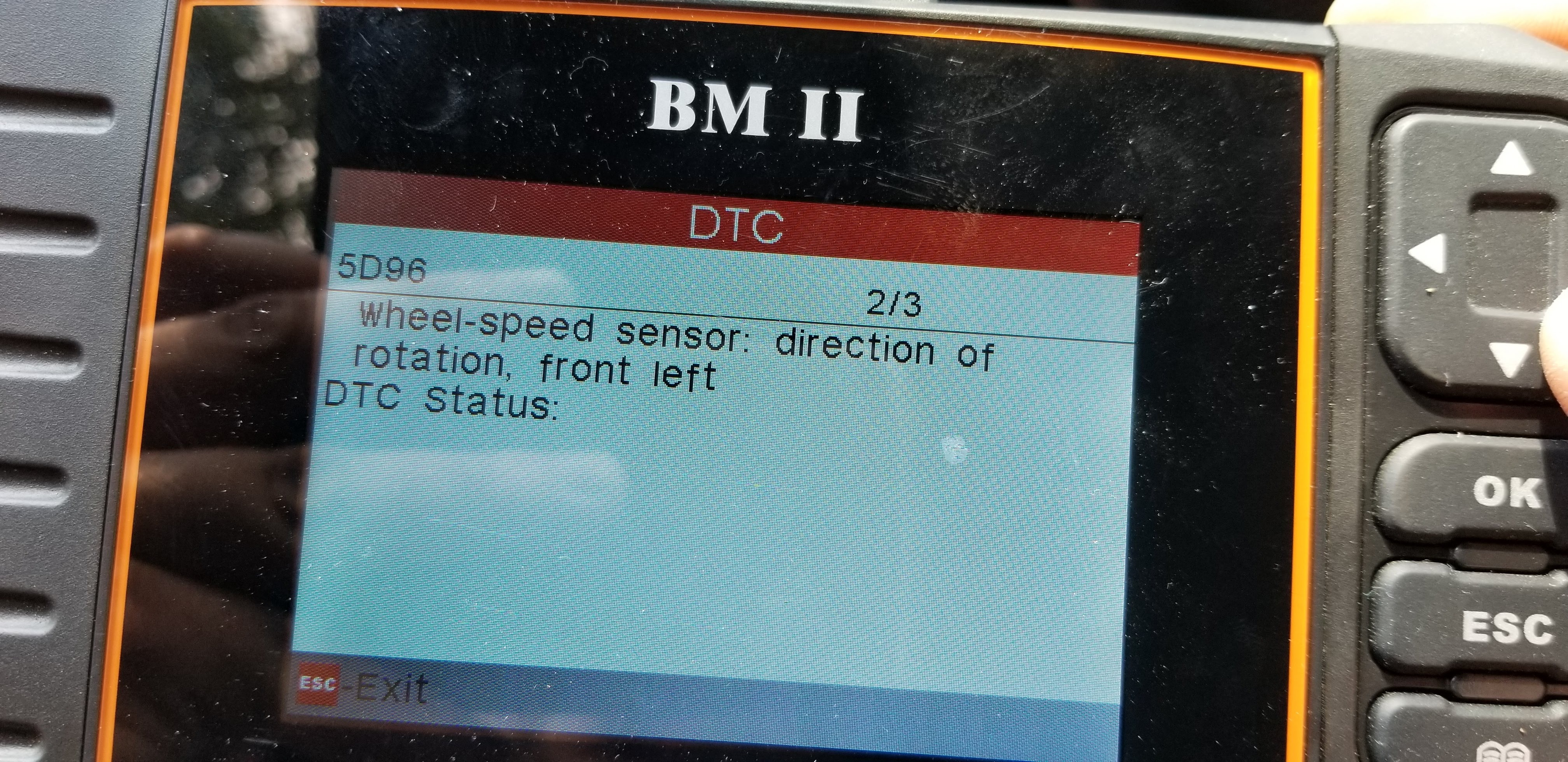
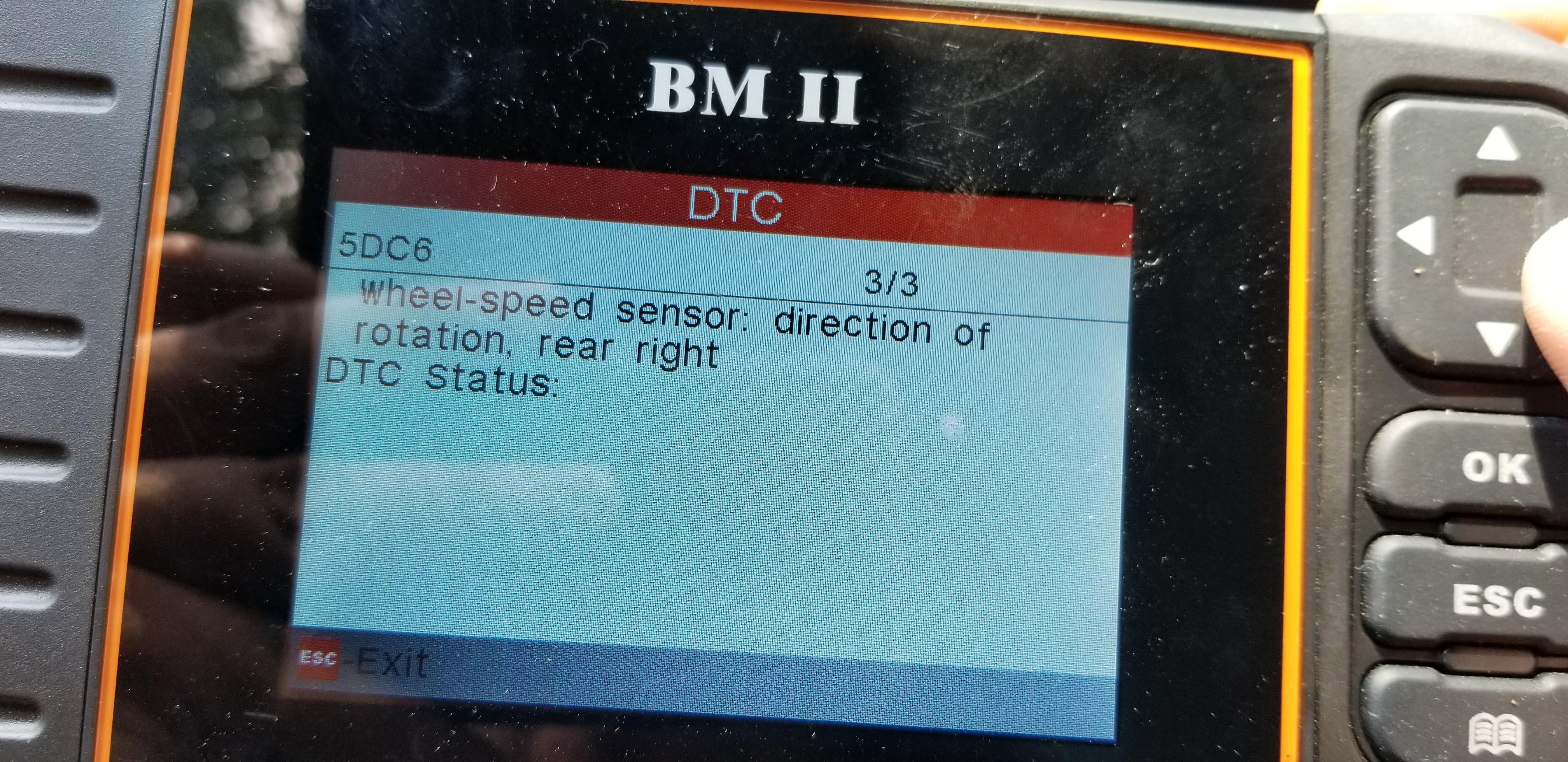
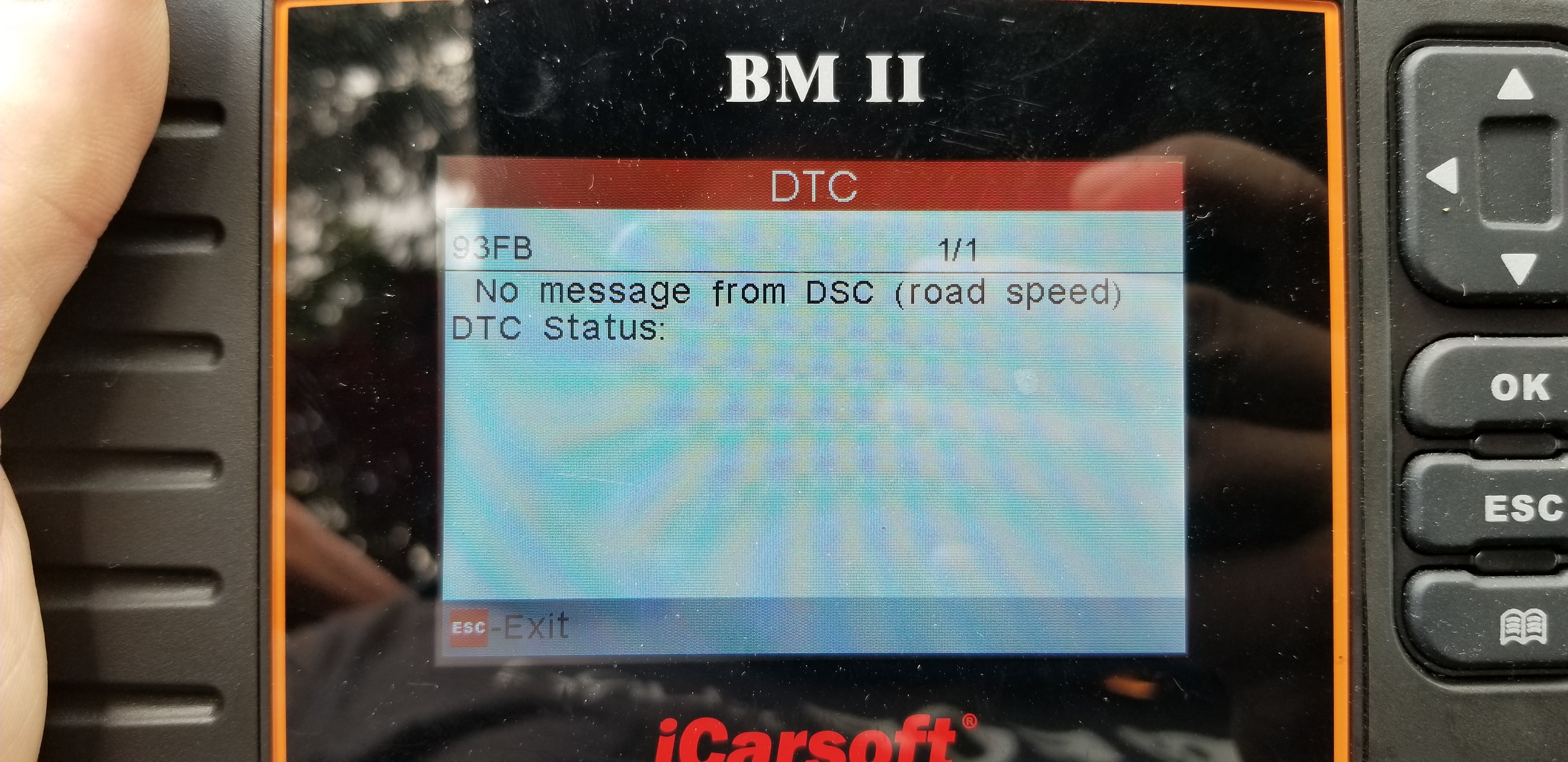
It's also worth mentioning I had other stored faults in the CAS, DME, and Combi modules. Many of the systems on these cars are tied together and receive data from one another. In the case of the SRS module it needs a verified wheel speed in order for the SRS system to be active. Failure of two wheel speed sensors in this case was enough to make the SRS features inactive on my car.
Step 3: Isolate the problem
There is no easy way to test an active wheel speed sensor. To do so you would need an oscilloscope to see how the sensor is functioning. Since most people do not have an oscilloscope (myself included) we need to be smart about how we determine if the problem is isolated to the sensor or is generated elsewhere. The easiest and most immediate way to isolate the issues is to swap sensors on the vehicle. In this case, the same sensor is used for the front left and front right and the same sensor is used for the rear left and rear right. It's fairly simple to disconnect and swap the sensors. I like to mark the sensor with a paint marker to identify it as the suspected problem. If you swap the sensors and the problem follows the sensor, you know for certain that the sensor is the problem and the solution is a simple sensor swap:
What if the problem does not follow the sensor you ask?
You need to look at the other areas that can affect a sensor reading. For starters, a bad wheel bearing can cause ABS faults and problems. In the case of the BMW E9X M3 the front and rear wheel bearings are magnetic and have a tone ring built into them. A build up of debris can cause similar problems to a bad wheel speed sensor. Additionally, a worn wheel bearing with play in it can break the tone ring creating the symptoms of a bad sensor. Always check your wheel bearings or tone rings (if located on the axle) during your diagnosis process. Next issues to check for is a wiring problem leading to the ABS control module. While rare, wiring problems can certainty cause issues. Always check the harness at junction points or where it passes through the body. These are likely areas for a wire to fray or break. It's also helpful to have access to a vehicle wiring diagram to trace wires back to the control module. In rare cases a control module can fail as well so don't rule that out as an issue.
In my case the issue was clearly related to two bad wheel speed sensors. Fortunately, we keep the OE ATE sensors in stock so getting them was about as convenient as it could be.
Step 4: Replace the wheel speed sensor(s)
Wheel speed sensor replacement in the front is easy. The sensor is secured to the knuckle via a 5mm hex cap screw and the wiring lead is secured to predetermined mounting points. Simply disconnect the sensor at the knuckle and follow the wiring lead along until you get to the connector housing. Open the connector housing and disconnect the connector (this is just like replacing a brake pad wear sensor FYI). When installing the new sensor I find it easier to start at the knuckle and work my way back to the connector housing. Make sure the wiring lead is secured at it's pre-determined locations.
Rear wheel speed sensor replacement is a little more challenging as the connector housing is hidden by the fender liner. In my opinion it's easier to remove the fender liner entirely. This makes it so you don't have to fight the fender liner and you can also clean the inner fender from build up of debris. Removing the fender liner requires an 8mm and 10mm socket. Once the fender liner is removed you can now remove and replace the sensor. Again, the sensor is secured to the backside of the knuckle with a 5mm hex cap screw. Once loose and removed from the knuckle follow the wiring lead along the control upper center arm. I used a small 90 degree pick to open the plastic retainers holding the wiring lead in place. Trace the wire and all mounting points back to the connector housing. Disconnect the connector. Installing the new sensor is easiest if you start from the knuckle and work your way back to the connection point. Make sure the wiring lead is secured at all predetermined points.
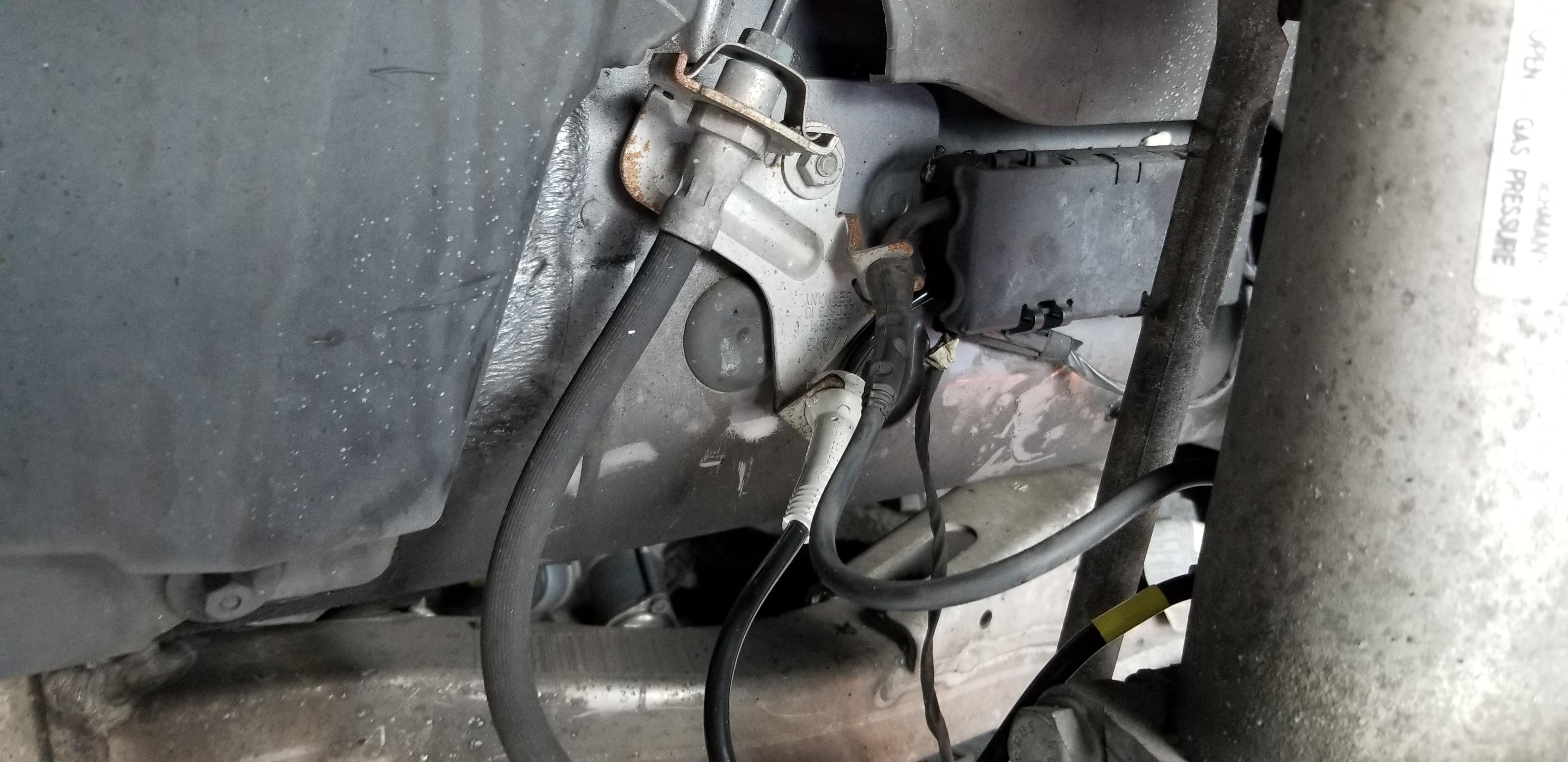
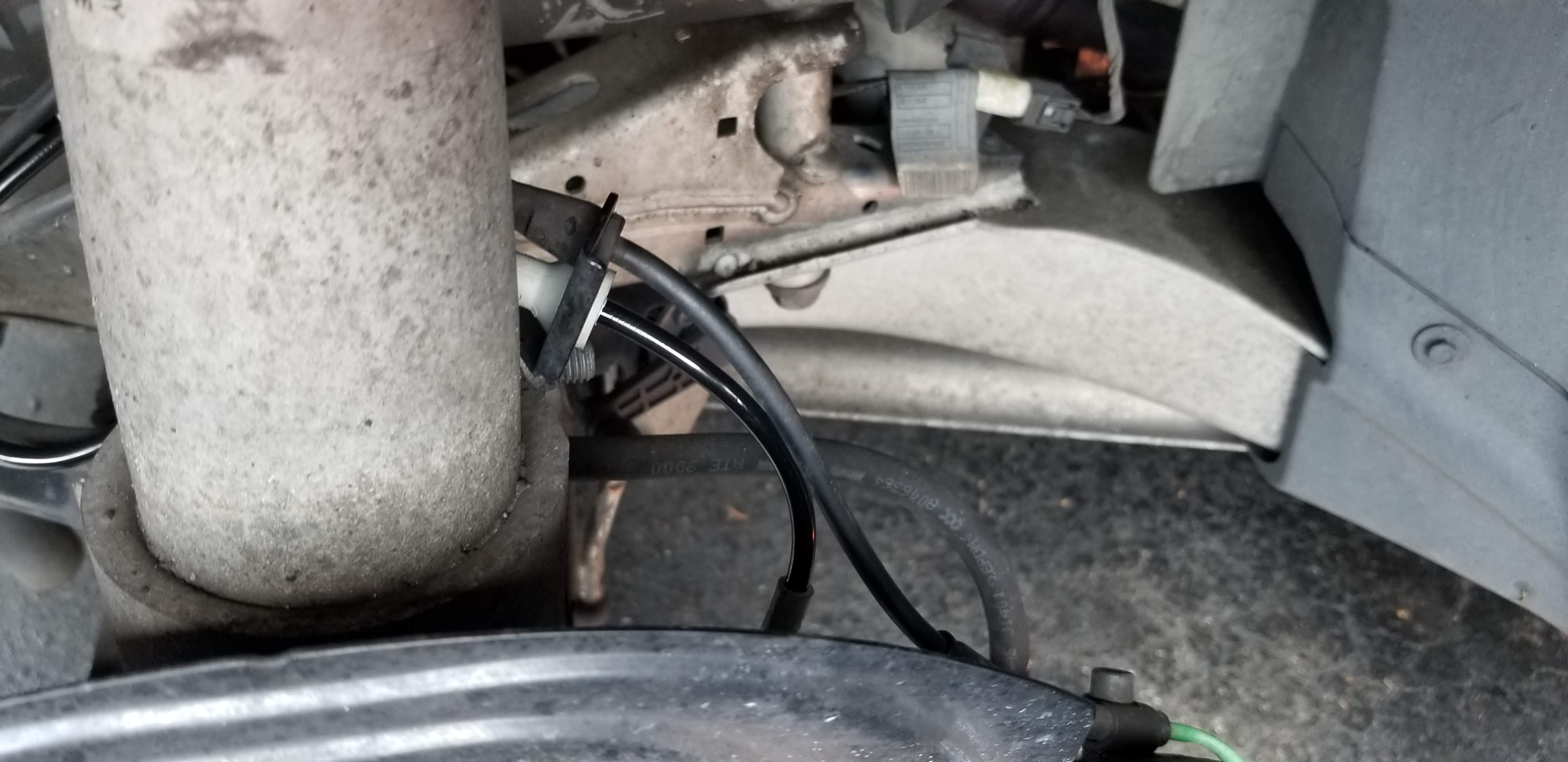

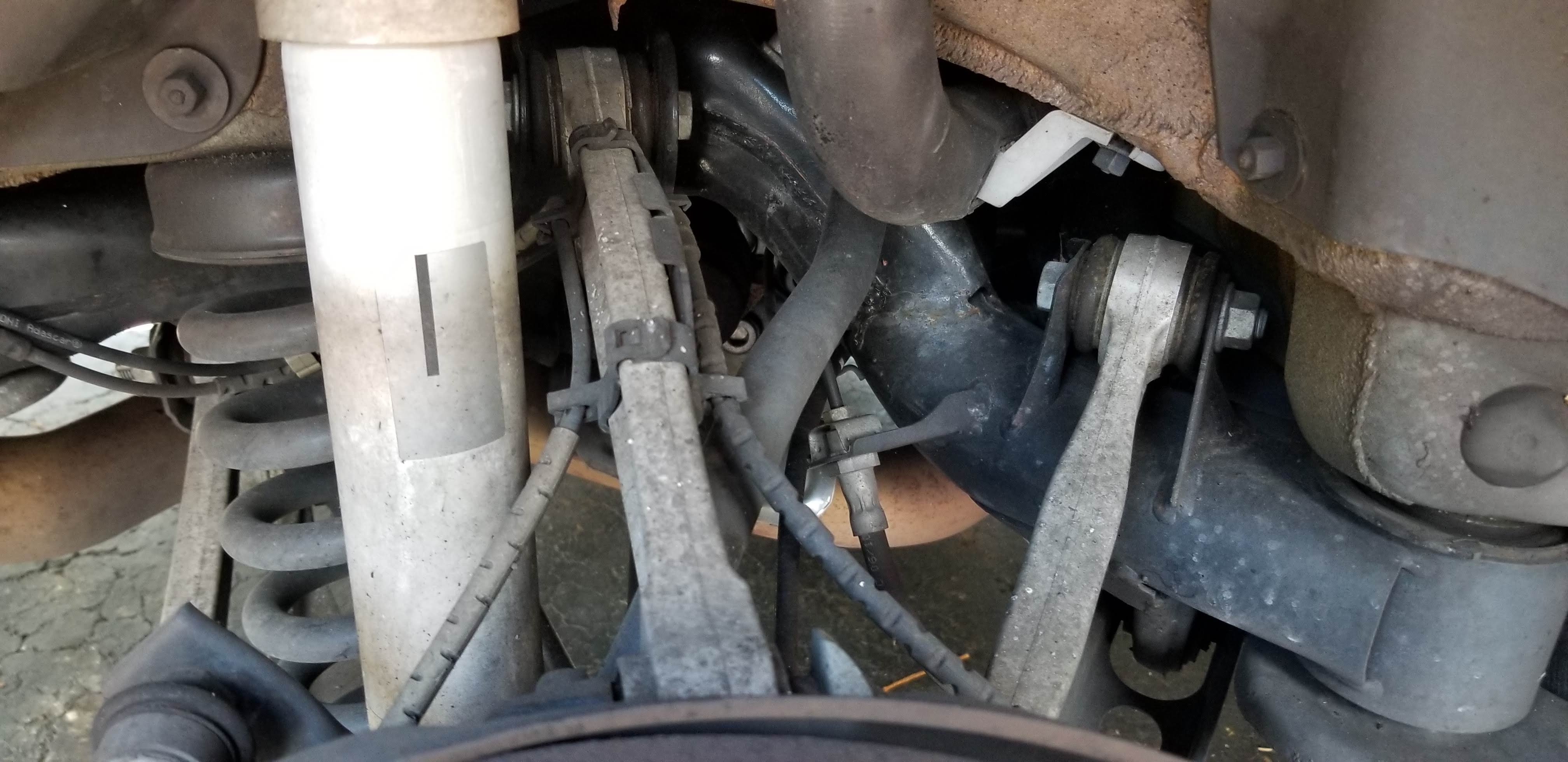

Step 5: Take vehicle for test drive
In the case of my E90 M3, after finishing the repair all warning lights turned off immediately. If the same doesn't happen for you, plug your scan tool in and clear all of the fault codes from the DSC module. Take the vehicle for a test drive with the scanner plugged in collecting live data. Since this specific issues was related to the front left and rear right wheel speed sensors I viewed live data for those sensors only. I was pleased to see both replacement sensors functioning correctly and providing live data in line with the two sensors that had not been replaced.
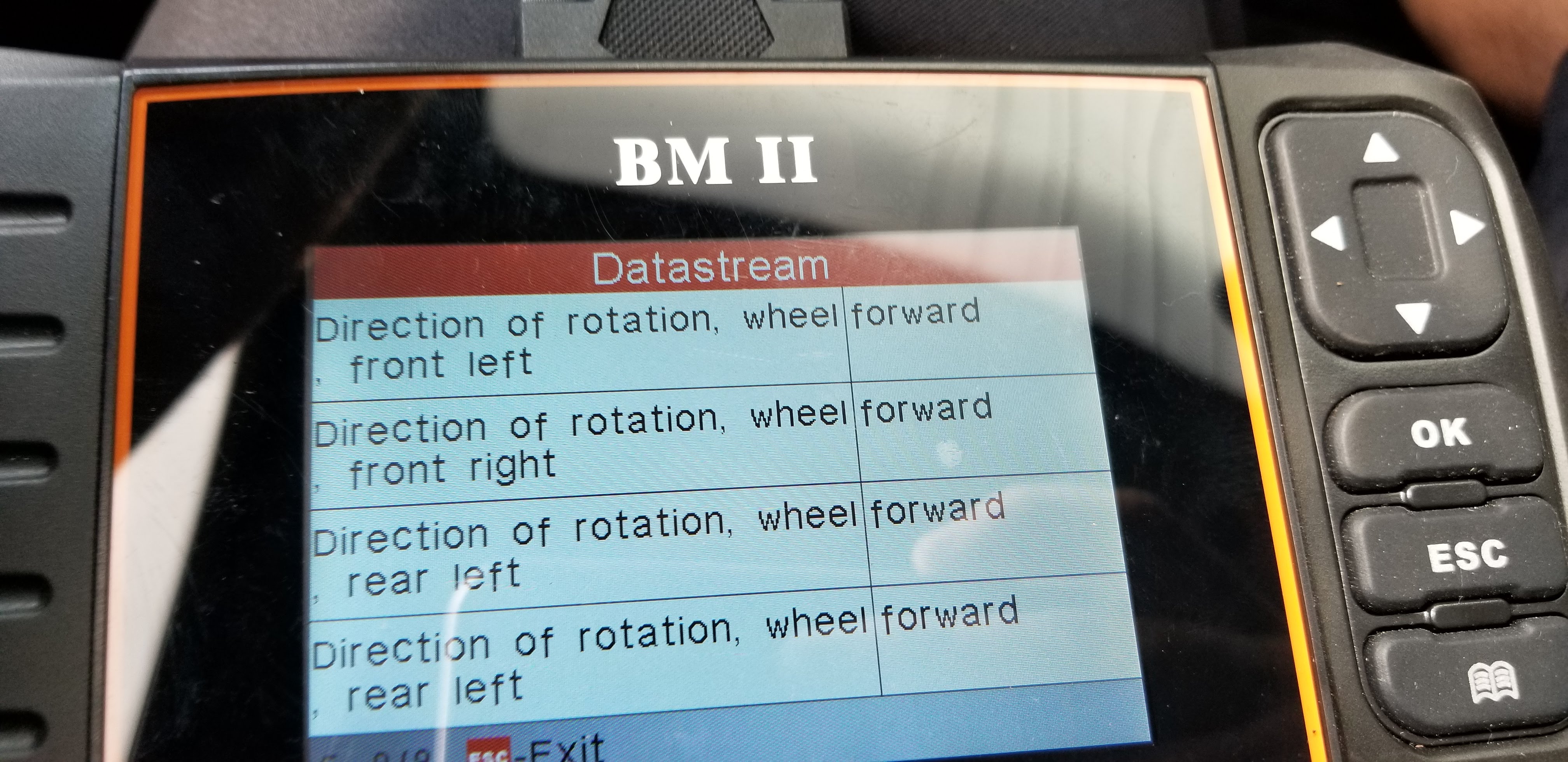
Step 6: Delete all stored fault codes and confirm repair
I looked at all body control modules to find related fault codes. These codes will go away after a while, but it's best practice to delete all codes after a repair to prevent confusing old fault codes with any new potential problem in the future. This also helps to verify your fix. With the scanner that I used for this repair, I had to manually look at each module. I found faults related to this ABS sensor problem in five body control modules (kind of crazy). I deleted all of them at one point during the test drive and monitored them to make sure they did not come back. None of the fault codes returned confirming the fix.
The lesson here is simple. While the DSC system used on modern BMW's can be intimidating due to how many inputs are needed by the system to function, it's not intimidating to trouble shoot wheel speed sensor problems. I have found that on the E8X 1-series and E9X 3-series that the active wheel speed sensors are very sensitive and any small change in the function of the sensor due to factors internal to the sensor cause them to not function. The good news is that the OE ATE sensors are reasonably priced and as reliable out of the box as Genuine BMW packaged ones. I'm not sure what a trip to a dealership or garage would cost to fix this problem but I'm sure it would be expensive. As long as you have a somewhat sophisticated scan tool to read live data and ABS faults this is 100% a problem that you can fix on your own.

